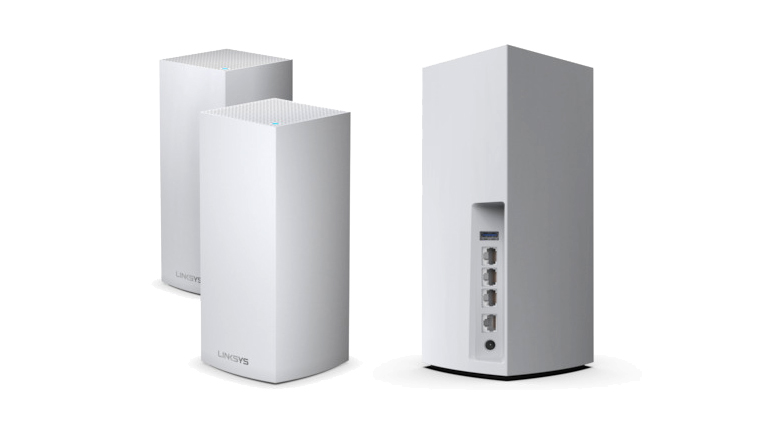'ZDNET Recommends': What exactly does it mean?
ZDNET's recommendations are based on many hours of testing, research, and comparison shopping. We gather data from the best available sources, including vendor and retailer listings as well as other relevant and independent reviews sites. And we pore over customer reviews to find out what matters to real people who already own and use the products and services we’re assessing.
When you click through from our site to a retailer and buy a product or service, we may earn affiliate commissions. This helps support our work, but does not affect what we cover or how, and it does not affect the price you pay. Neither ZDNET nor the author are compensated for these independent reviews. Indeed, we follow strict guidelines that ensure our editorial content is never influenced by advertisers.
ZDNET's editorial team writes on behalf of you, our reader. Our goal is to deliver the most accurate information and the most knowledgeable advice possible in order to help you make smarter buying decisions on tech gear and a wide array of products and services. Our editors thoroughly review and fact-check every article to ensure that our content meets the highest standards. If we have made an error or published misleading information, we will correct or clarify the article. If you see inaccuracies in our content, please report the mistake via this form.
Linksys Velop Mesh WiFi 6 (AX4200) System, hands on: A good mid-range mesh Wi-Fi system


Linksys Velop Mesh WiFi 6 (AX4200) System
pros and cons
- Simple setup
- Good Wi-Fi 6 performance
- Bulky nodes
- Some controls lack depth
Mesh Wi-Fi has become the go-to option for extending the Wi-Fi range in many small office and home office environments, and also has a strong following among consumers. Linksys has been in the game for a while and has a new Wi-Fi 6 (802.11ax) version of its Velop Whole Home Intelligent Mesh Wi-Fi 6 (AX4200) System. The two-node kit I was sent costs £375, while a single node costs £226 and a three-node kit costs £579. Linksys says each node will cover 2,700 square feet (2,508 sq m). In the US, a single AX4200 node costs $249.99.
Setup is simplicity itself. Download the mobile app, configure a login, connect whatever you designate as the 'primary node' to your internet router via the Gigabit WAN port and to mains power, and then return to the app to walk through the few stages that complete setup. The whole process was easy, and my two-node system was up and running in under 15 minutes.
The Velop Mesh Wi-Fi 6 (AX4200) nodes measure 114.3mm (4.5in.) square by 243.8mm (9.6in.) tall and weigh 943.5g (2.08lbs).
The nodes themselves are large, measuring 24.4cm high and 11.4cm square. They shouldn't be hemmed in -- behind cupboards, for example -- as this will interfere with their ability to work optimally. Instead, these white plastic monoliths will likely create a bit of visual clutter.
SEE: Gartner releases its 2021 emerging tech hype cycle: Here's what's in and headed out
The tri-band system delivers a top speed of 4.2Gbps, which was plenty to meet my household needs, including powering working from home, family video calling and delivering streaming entertainment services. If wired connections are preferred, then every node has three Gigabit Ethernet ports at its disposal.
Ports and connectors on the Velop Mesh Wi-Fi 6 (AX4200) nodes: USB 3.0; 3x Gigabit Ethernet; Gigabit WAN; power.
There is also a USB-A port on each node, and this can be used to attach external storage so that content can be shared and streamed by anyone on the network. I tested this with an external hard drive and sharing worked perfectly. There are even some instructions on how to access shared devices via different operating systems in the Linksys app.
The app is neat and accessible. It is easy to set up guest access on the hoof, with a private password that provides internet access but no visibility of computers or connected devices, so that guest accounts can be switched on and off as needed. However, some controls are less expansive than they could be. Parental controls include blocking internet access from specific devices on a schedule or on demand, but website blocking is managed by manually adding URLs, which is a hassle.
Video calling can be given priority over all other types of activity, and it's also possible to prioritise up to three devices for bandwidth use, with the remainder sharing whatever is left. So, those work calls happening while others are using the smart TV may no longer stutter.
Performance during testing was very impressive. Everything seemed to work a little bit faster, and the reach was excellent. My existing system doesn't stretch into the kitchen or to the far end of the garden, but the Velop WiFi 6 (AX4200) managed both, and speeds in these locations seemed as good as those in my home office right by the router.
With home office working much more prevalent for many people nowadays, a solid mesh Wi-Fi system might be a wise investment. The Linksys Velop WiFi 6 (AX4200) is easy to set up, even for newcomers to the concept, and while the detailed controls could do with a bit more depth, these may well come as Linksys develops the system further.
RECENT AND RELATED CONTENT
Netgear Orbi Quad-Band Mesh WiFi 6E System (RBKE963): Fast but expensive wireless mesh networking
Fortinet, Linksys joint venture aims to bring enterprise security to home offices
Best Wi-Fi router 2021: Expert reviews of top brands
Mesh networking vs. traditional Wi-Fi routers: What is best for your home office?
Best mesh Wi-Fi system 2021: Top routers compared
Read more reviews
- Honeywell Home T9 Smart Thermostat review
- WaterField Air Travel Backpack review: Perfect bag for hands-free business travel
- Lenovo Yoga Slim 7i Carbon, hands on: A compact sub-1kg ultraportable
- Airthings View Plus, hands on: Smart but pricey air quality monitoring
- Fairphone 4 5G review: A sustainable smartphone for ethical consumers